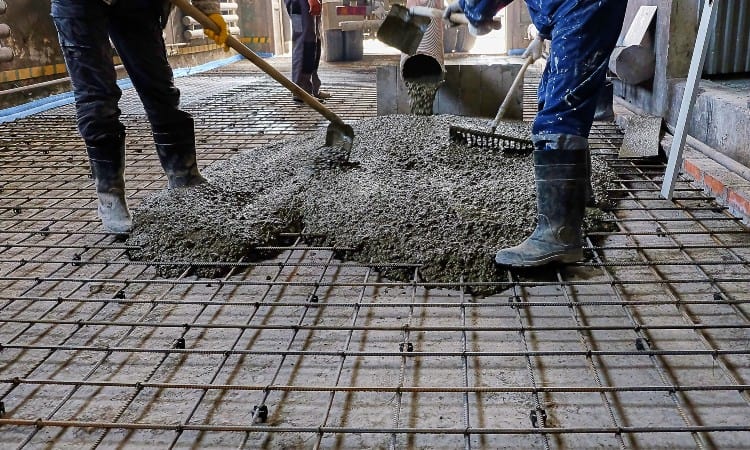Plain concrete lacks reinforcement and is typically applied in applications that do not require high tensile strength, such as pavements. It typically utilizes a mix design ratio of 1:2:4, giving rise to its name: 1:2:4 plain concrete.
Plain Concrete
Plain concrete is a combination of cement, sand and aggregate used in projects that do not require high tensile strength. Although strong and durable material, improper construction could lead to cracking and crumbling under pressure.
Concrete blocks are widely used to construct foundations and floors, as well as concrete retaining walls, as well as roads, bridges, and culverts.
Low density concrete is made with lighter aggregates like pumice, perlites and scoria that allow it to be formed into blocks or other shapes easily for use in staircase units, precast walls and poles. Steel reinforcement can increase its tensile strength further. This type of concrete is commonly found at nuclear power plants as a shield against radiation exposure.
Self-Compacting Concrete
Self-compacting concrete (SCC) is a type of highly flowable concrete that fills and covers forms without mechanical compaction, making it suitable for complex structures that feature thin sections or dense placement of reinforcing steel reinforcement. SCC can often be found used for wall and pier construction projects that need thin concrete sections or dense reinforcement placements.
Concrete house slabs Melbourne is one of the world’s most commonly used building materials, comprising of cement, water, aggregate and sand – as well as various additives added for strength, workability and durability.
This type of concrete does not need to be vibrated, which is beneficial for worker health and safety. Furthermore, it can also be easily placed into tight spaces with heavy reinforcement.
An innovative blend of mineral fillers and chemical admixtures are used to achieve desired properties of high performance concrete, often including new-generation superplasticizers and air entraining agents with retarders to control set time. High performance concrete requires higher precision when mixing, measuring and monitoring its set time as well as more durable forms than regular concrete for its production.
Pre-Cast Concrete
Precast concrete is made offsite and transported directly to its construction site for use, providing for a more controlled manufacturing process with more accurate tolerance measurements and minimal waste production.
Concrete is typically poured into molds containing wire mesh, rebar or prestressed cable to strengthen it before being cured in an environmentally controlled setting and transported to its construction site for assembly.
Precast concrete construction is much faster and safer than cast-in-place, which makes it a good option for projects where time is of the essence. Concrete elements can easily be transported via truck or crane to their final destinations in a structure, and careful design allows disassembling them for reuse elsewhere on a project.
Concrete Blocks
Concrete blocks can be utilized in various construction projects such as partition walls, foundation construction and basement renovation. Furthermore, they’re perfect for exterior landscaping projects as they come in a range of shapes and sizes; some even allow customization with specific colours!
Fiberglass insulation panels boast outstanding fireproofing properties and can be formed into various designs. Furthermore, they provide insulation benefits and help lower energy bills; additionally they are resistant to mold growth while limiting allergen infiltration into outdoor spaces.
CMU stands for “concrete masonry units.” These blocks come in two main varieties: solid and hollow concrete blocks. Solid ones resemble bricks in appearance and typically provide greater wind protection; hollow blocks, on the other hand, may be ideal for creating walls against natural elements like rain.
Concrete Pavements
Concrete pavements can be designed as rigid or reinforced slabs laid over granular bases. Their ability to withstand vehicle loads depends on their flexural strength – this enables slabs to bend under load and spread it more evenly over a larger subgrade area.
Rigid pavements help maintain safe highways while simultaneously decreasing traffic delays and air pollution due to vehicles stuck in traffic congestion. Meanwhile, decorative concrete pavements add visual interest in sidewalks, parks and public areas, thus increasing civic pride. Concrete is also preferred as a material for runways and airport terminals to reduce maintenance costs while increasing safety – precast concrete can be placed quickly so these projects can start receiving passenger flights almost instantly!
